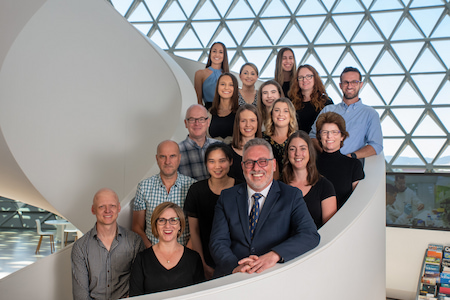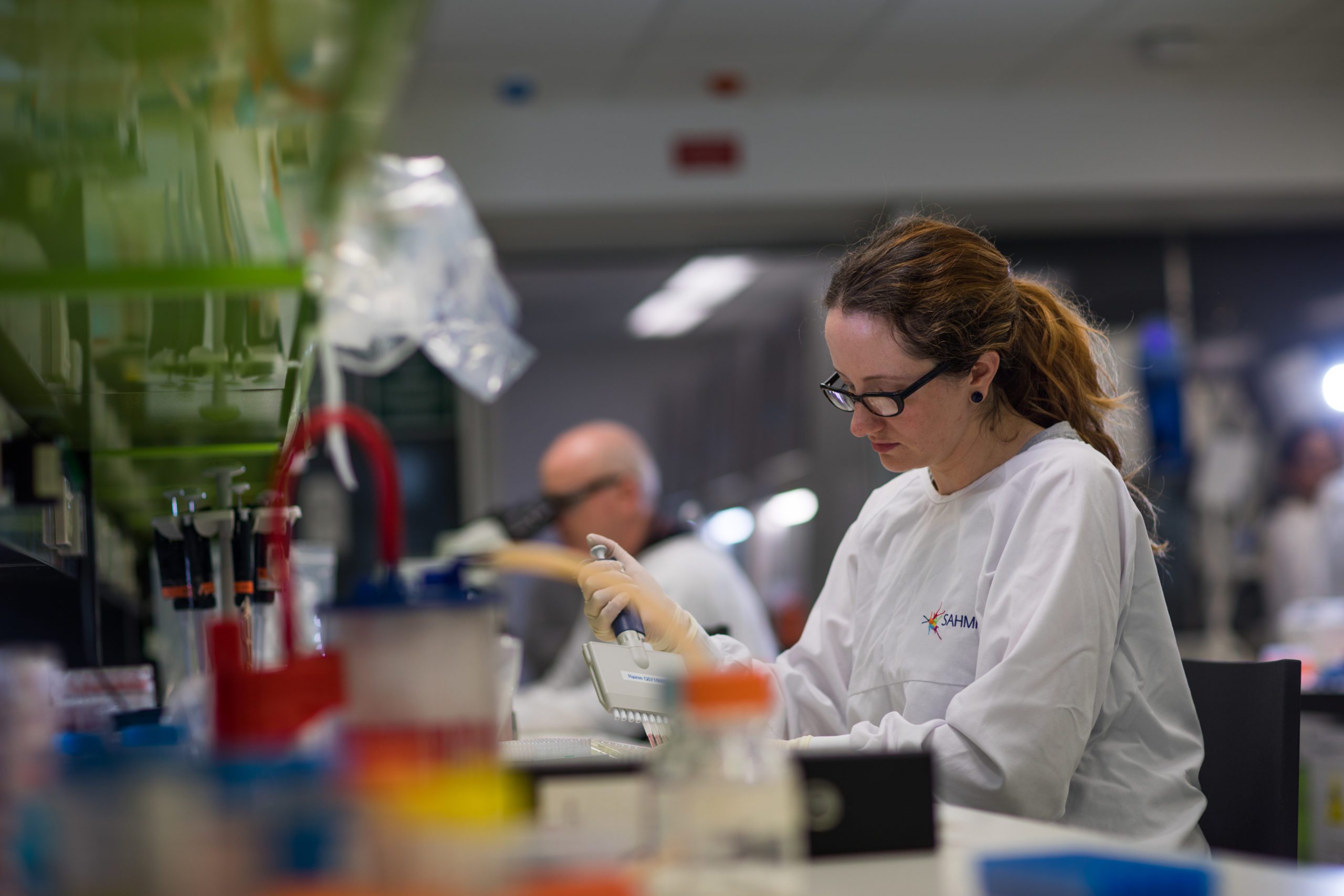Research aims to improve QOL by decreasing treatment toxicity
Research aims to improve QOL by decreasing treatment toxicity

Exciting research is examining whether a new inhibitor can be used to prepare myeloma patients for bortezomib and other myeloma therapies, to increase the efficacy and potentially decrease toxicity of these therapies.
Lead investigator, Dr Kate Vandyke is a Research Fellow in Professor Andrew Zannettino’s Myeloma Research Laboratory at the South Australian Health and Medical Research Institute, Cancer Theme.
“We’re a pretty big lab of 25 and we mainly work on factors that are associated with poor prognosis in myeloma and working out ways of targeting these factors,” said Dr Vandyke.
“We also investigate the interaction between the cancer cells and the microenvironment and pre-malignant myeloma conditions like monoclonal gammopathy of undetermined significance (MGUS) that can convert to myeloma.”
Dr Vandyke was awarded a Priority-driven Collaborative Cancer Research Scheme grant in 2019 to build on her finding that the novel N-cadherin inhibitor, LCRF-0006, can dramatically increase the antitumour efficacy of low dose bortezomib (Velcade®) treatment. This grant was co-funded by the Leukaemia Foundation, Cure Cancer Australia, and Cancer Australia.
“The project has been a long time in the making,” said Dr Vandyke.
“We’ve been working on a N-cadherin inhibitor (LCRF-0006) as a potential target for myeloma for almost 10 years.

In this project, Dr Vandyke is looking at one particular drug (bortezomib) that’s used in the majority of myeloma patients and which causes peripheral neuropathy in about a third of these patients.
“This is a really horrible side-effect affecting the nerves in the extremities. It causes pain in the hands and feet, pins and needles, numbness, and burning sensations – it’s really nasty,” she said.
“Bortezomib, as well as targeting the myeloma tumour cells, also targets some of the long nerve fibres that go into the hands and feet. It targets the long axons of these nerve fibres and causes damage.”
Dr Vandyke’s project will look to increase the way the drug is delivered intravenously from the bloodstream to the cancer cells.
“The way bortezomib moves out of the blood and into the cancer cell is limited by the blood vessels as they’ve got a strong boundary around them that stops the blood from seeping out,” said Dr Vandyke.
“We think that this N-cadherin inhibitor is just opening up that barrier a little bit to allow the drug to get through more efficiently. It’s working more on blood vessels in cancer rather than normal blood vessels.
“You’re getting more of the drug into the cancer and can decrease the amount that’s going elsewhere in the body which should decrease those side-effects.”

The research team has just published a paper in the medical journal, FASEB BioAdvances, using a pre-clinical model showing that using LCRF-0006 effectively increases the effect of the bortezomib.
“This means we can actually use a lower dose of bortezomib and therefore we hope side-effects will stop because you’ll get a better anti-cancer effect with a lower-dose drug,” said Dr Vandyke.
The next steps will be to see if the side-effects are actually decreased and to optimise the drug to be ready for human clinical trials.
“Because this drug hasn’t been used in patients before, it would have to go through Phase I trials and safety studies before going on to larger clinical trials,” said Dr Vandyke.
“Also, because we don’t have a pharmaceutical company that’s making the drug, the next big hurdle would be funding – always a challenge.”
Dr Vandyke is motivated by the people who are living with myeloma and whose quality of life could be improved significantly by her work.
“As a scientist, you can get bogged down in the finer details of what you’re doing and you forget the big picture,” she said.
“We have a lot of engagement with patient groups that come for tours and education sessions at the lab.
“While advancements in myeloma therapies have improved survival rates significantly, toxic side-effects and treatment-related quality of life (QOL) have become increasingly important factors for patients.
“Many patients won’t want to take the drug if it’s going to have such a detrimental effect on their quality of life, regardless of the long-term survival outcome.”
Dr Vandyke is also passionate about fostering the next generation of researchers.
“I really enjoy the teaching and supervision side of things. I’ve got quite a few PhD students that I co-supervise with Prof. Zannettino and I’m mentoring a couple of junior researchers as well,” she said.
“One of them, Dr Krzysztof Mrozik, has been a real driver for this project – we couldn’t have done it without him.
“It’s also great for them to be able to talk to the patients and their carers and families and see this is why we’re doing what we’re doing.”
Dr Vandyke said she was, “incredibly grateful to Leukaemia Foundation supporters for enabling me, and my team, to do the work we do”.
“They have made this project possible.”
Dr Vandyke has used this funding support to expand her research group; to hire a technical support staff member, and support the research of a junior researcher.
“These grants are given to some of the very best emerging talent from around Australia, and I am proud to be included in this group.”
Last updated on February 22nd, 2022
Developed by the Leukaemia Foundation in consultation with people living with a blood cancer, Leukaemia Foundation support staff, haematology nursing staff and/or Australian clinical haematologists. This content is provided for information purposes only and we urge you to always seek advice from a registered health care professional for diagnosis, treatment and answers to your medical questions, including the suitability of a particular therapy, service, product or treatment in your circumstances. The Leukaemia Foundation shall not bear any liability for any person relying on the materials contained on this website.